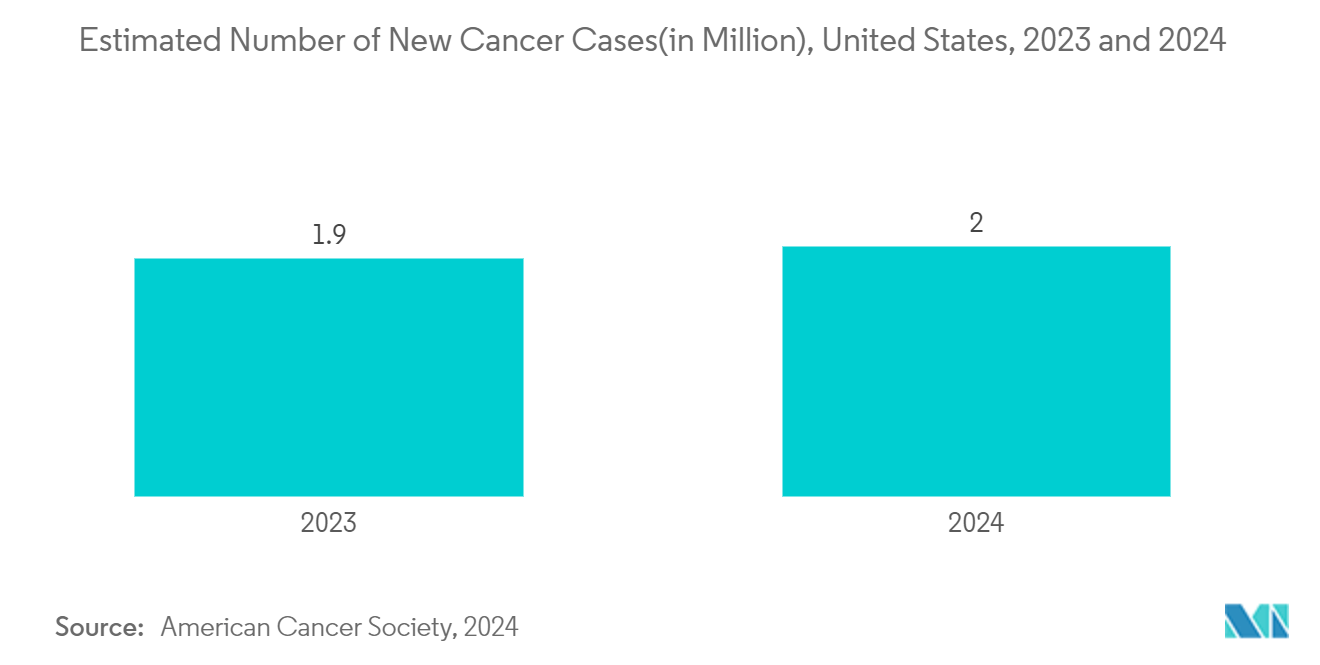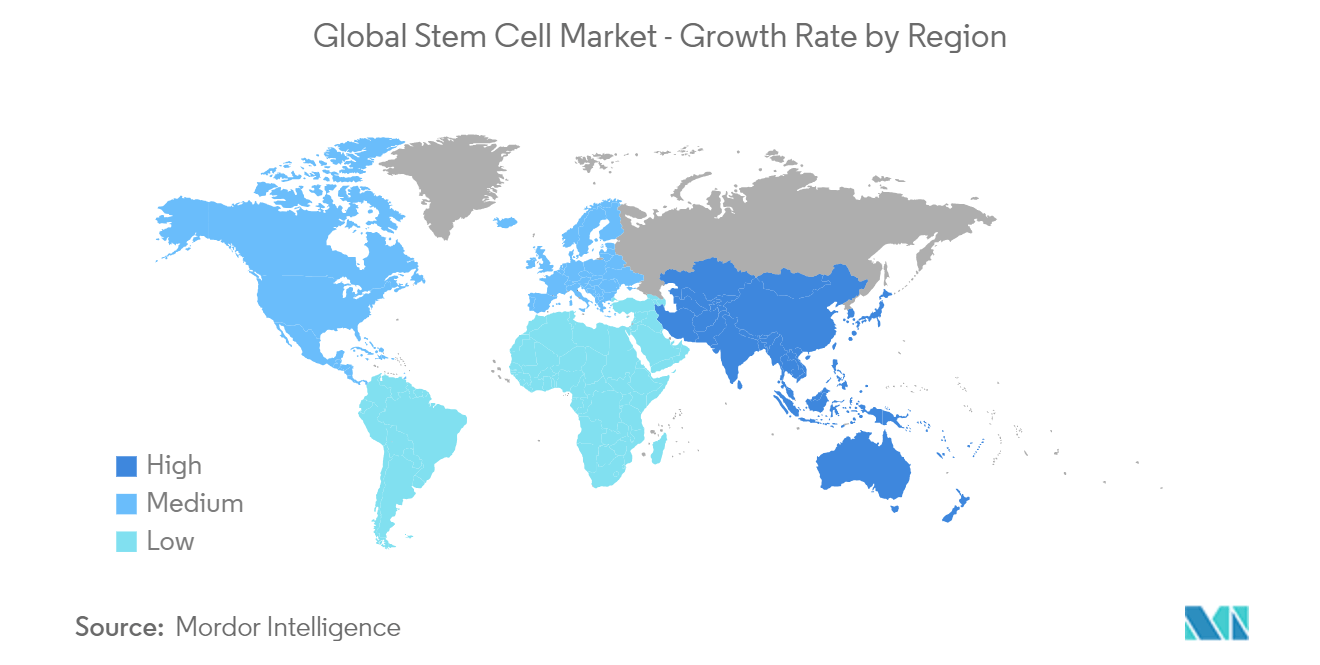Market Trends of Global Stem Cell Industry
The Oncology Disorders Segment is Expected to Exhibit the Fastest Growth Rate During the Forecast Period
The alarming increase in the burden of cancer globally, growing demand for innovative treatment options, the proven role of stem cell therapies in cancer treatment, and several strategic initiatives undertaken by industry participants are projected to augment segment uptake during the forecast period.
The increase in the burden of cancer and malignancies is expected to foster segment uptake over the coming years. For instance, according to the February 2024 updated data of Cancer Australia, the number of kidney cancer cases diagnosed ramped from 4,552 in 2022 to 4.600 people in 2023. Kidney cancer is the seventh most commonly diagnosed cancer in Australia, and it is estimated that one in 65 people will be diagnosed with the condition. Thus, the accelerating burden of cancer is expected to augment the demand for cell therapies like stem cell therapies for the effective management of cancer.
In addition, in recent years, stem cells have been used effectively in blood replenishment and immuno-reconstitution after cancer treatment. Also, these cells have gained remarkable traction across healthcare professionals for their role as a modality for delivering anti-tumor agents and their implication in tissue regeneration. A significant number of entities have reported positive outcomes of implementing this mode of tumor treatment. For instance, according to October 2023 data from the DVC Stem (Da Vinci Wellness Center), stem cells have shown promising outcomes in cancer, and approximately 87.5% of people realized improvement in their condition.
Similarly, in May 2023, a senior hematologist from Rajiv Gandhi Cancer Institute and Research Centre, New Delhi, demonstrated stem cells' role in managing blood cancers and emphasized their roles in successful treatments. Thus, the evolving landscape of stem cell therapies in cancer and healthcare professionals' higher adoption of stem cell implants will likely cater to segment growth during the forecast period.
Several strategic initiatives market players undertake are further projected to augment segment growth during the forecast period. For instance, in October 2022, Bristol Myers Squibb (BMS) and Century Therapeutics formed a research collaboration to manufacture and commercialize four iPSC-derived (induced pluripotent stem cell) T-cell or natural killer cell programs for solid tumors and hematologic malignancies. Thus, such initiatives will likely foster segment growth during the forecast period.
Thus, owing to the abovementioned factors, such as the higher burden of cancer, growing demand for innovative therapeutics, and several strategic initiatives undertaken by the market players, segment growth is expected to propel during the forecast period.

North America is Expected to Hold a Significant Share in the Stem Cell Market During The Forecast Period
North America is projected to exhibit lucrative growth during the forecast period amid an increase in the prevalence of chronic diseases, growing research in stem cell therapies, the growing uptake of regenerative medicine in the region, and the region's supportive regulatory framework.
The increase in the burden of cancer in the United States is expected to fuel market growth. For instance, according to the American Cancer Society, the prevalence of mouth cancer is increasing in the country, and the country was about to report 15,490 mouth cancer cases in 2024 compared to 14,820 in 2023. Thus, the rising number of cancer cases is projected to fuel demand for advanced cancer therapies, which, in turn, will augment demand for stem cell therapies during the forecast period.
The rising emphasis on understanding stem cells' roles in cancer management has attracted researchers to develop cell-based cancer therapies. For instance, in January 2022, scientists from Cedars-Sinai demonstrated the role of stem cell therapies in cancer and their importance in improving cancer treatment.
Similarly, in December 2022, the City of Hope, a leader in stem cell medicine, and its Alpha Stem Cell Clinic received a USD 8 million grant from the California Institute of Regenerative Medicine to accelerate its role in regenerative medicine and cancer. Thus, such increased research efforts are likely to support regional market growth.
Also, a supportive regulatory framework coupled with rising demand for advanced therapeutics further fosters the regional market. For instance, in September 2023, the US Food and Drugs Administration approved motixafortide for use with filgrastim to prepare for a stem cell transplant. The approval is based on positive clinical trial results. In addition, in April 2023, the USFDA approved Omisirge, an allogeneic stem cell transplant therapy in the United States.
Thus, the factors mentioned above, such as North America's higher burden of chronic diseases, increasing research in stem cell therapeutics, and growing uptake of regenerative medicine in the region, are projected to accelerate regional market growth during the forecast period.


